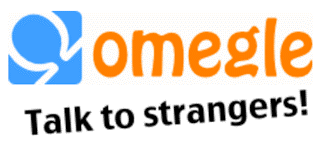
Cyber-alert: Omegle

A free online chat service, Omegle, has recently come to our attention and presents safety concerns for children using this platform. This platform appears to be gaining popularity amongst students and, while the platform is blocked on our school network, parents need to be aware of the potential dangers of this site for students using their mobile data or at-home networks.
What is Omegle? Omegle is a free online chat service which pairs random strangers into an online video call or text conversation, without the need to register or create an account.
Why is it a safety concern? There are multiple concerns for children using the site unsupervised including:
- Omegle is not designed at children
Omegle’s terms and conditions require children between 13 and 18 years old to ask for permission from their parent or guardian before using the site. This indicates that Omegle isn’t a service that is suitable for children or young teenagers to use unsupervised.
- Sexually explicit content
Omegle conversations may be sexually explicit, expose children to sexually explicit activities, involve sharing of photographs or images with others in a live video call or expose your child to requests to engage in sexually explicit activities.
- Predators target children on Omegle
Omegle’s website includes a warning that predators have been known to use its service. Media reports contain several examples of this. Predators can easily hide their identity, pretending to be a different age or different person entirely and Omegle’s anonymity means this can be very hard to track.
- Adult Chat
Omegle has an adult chat option which contains heavily explicit content. The user only needs to confirm they are an adult by clicking a button before being redirected to an external adult pornography site.
Free Parent Seminar
The Butterfly Foundation is a national charity for Australians impacted by eating disorders and body image issues, and for the families, friends and communities who support them. The Foundation is offering the following two free parent seminars in coming months to support the development of positive body image for young people:
- Let’s Talk Body Image in Boys - Information for Parents
Explores the particular challenges facing pre-teen and adolescent boys and strategies for supporting body image in males
Date: Wednesday 31 August 2022
Time: 7-8.15pm via Zoom
- Let’s Talk Body Confident Children and Teens
Designed to help parents support the development of positive body image and healthy behaviours in children of all ages and genders.
Date: Monday 12 September 2022
Time: 7-8.15pm via Zoom
New Child Safe Standards
Keeping children safe is one of our most important priorities at Kolbe. As Catholic educators, we have a moral, mission-driven and legal responsibility to uphold and actively promote the wellbeing and safety of every student entrusted to our care.
To assist us with this important work, the Victorian Government has introduced 11 new Child Safe Standards (CSS) that aim to further strengthen child safe environments and protect children from abuse. These standards come into effect on Friday 1 July 2022.
Ahead of July 1, we have begun implementing these child safety reforms, strengthening our policies and strategies for the ongoing wellbeing and safety of every child in our school. Our updated Child Safe Policies are now available on our website at https://www.kolbecc.catholic.edu.au/policies/kolbe-policies. If any parents or families wish to provide feedback or contributions to any of these policies, please contact Tracey Kift - Deputy Principal.
A school culture that prioritises child safety is based on openness, awareness and transparency. To support regular conversation and build awareness about student wellbeing, the prevention of harm, and child safety, we will include information about Child Safety in each of our monthly newsletters and will continue to outline what how these essential eleven Child Safe Standards will be embedded and strengthened in our community:
- Culturally safe environments – Organisations establish a culturally safe environment in which the diverse and unique identities and experiences of Aboriginal children and young people are respected and valued.
- Leadership, governance and culture – Child safety and wellbeing is embedded in organisational leadership, governance and culture.
- Child and student empowerment – Children and young people are empowered about their rights, participate in decisions affecting them and are taken seriously.
- Family engagement – Families and communities are informed, and involved in promoting child safety and wellbeing.
- Diversity and equity – Equity is upheld and diverse needs respected in policy and practice.
- Suitable staff and volunteers – People working with children and young people are suitable and supported to reflect child safety and wellbeing values in practice.
- Complaints processes – Processes for complaints and concerns are child focused.
- Child safety knowledge, skills and awareness – Staff and volunteers are equipped with the knowledge, skills and awareness to keep children and young people safe through ongoing education and training.
- Child safety in physical and online environments – Physical and online environments promote safety and wellbeing while minimising the opportunity for children and young people to be harmed.
- Review of child safety practices – Implementation of the Child Safe Standards is regularly reviewed and improved.
- Implementation of child safety practices – Policies and procedures document how the organisation is safe for children and young people.


